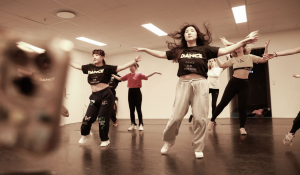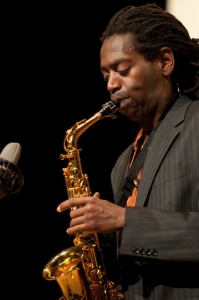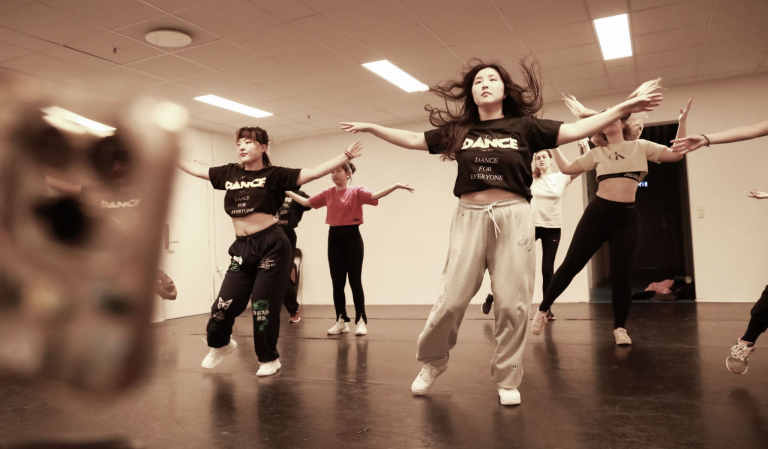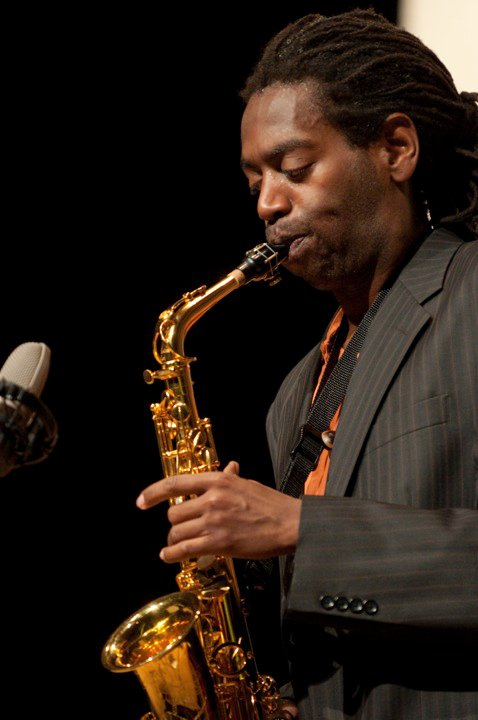Portraiture Projects have become a vibrant platform for amplifying the stories of those often overlooked in history. Spearheaded by artist Robert Shetterly and other visionaries, these projects seek to convey themes of hope, change, and cultural representation. Through evocative portraits such as those found in the “Americans Who Tell the Truth” series, viewers are invited to encounter the courage of notable figures like female changemakers who have made significant impacts in their fields. Recent exhibitions, including a collaboration with the Harvard Foundation, highlight the importance of celebrating diverse voices, especially during pivotal events like Women’s Week. By merging artistic expression with social justice, Portraiture Projects not only honor individual stories but also inspire ongoing discussions about equity and representation in society.
In exploring the realm of visual storytelling through painted likenesses, Portrait Projects serve as a crucial medium for presenting transformative narratives. The initiative, championed by prominent figures such as Robert Shetterly, highlights the journeys of individuals who challenge systemic issues and advocate for justice. By showcasing the artworks of both well-known and emerging female leaders, these projects aim to redefine cultural visibility and inspire collective responsibility in promoting gender equity. Recent exhibitions have fostered dialogues around the legacies of impactful Americans, celebrating those who have championed rights and equality through their life’s work. Ultimately, these artistic endeavors forge connections that transcend mere representation, creating a tapestry of shared experiences and hopes for a more just society.
The Vision Behind Portraiture Projects
The inception of the Portraiture Projects can be traced back to the combined efforts of Robert Shetterly and the late S. Allen Counter, whose vision was to reflect the realities of cultural representation through impactful art. Both visionaries aimed to elevate the voices of those often overlooked in society, using portraiture not just as art but as a vehicle for storytelling and activism. Shetterly’s disillusionment with socio-political events, particularly the decision to go to war in Iraq, drove him to create a series that honors Americans who have stood for truth, embodying courage in the face of adversity.
With the Harvard Foundation Portraiture Project, Counter fostered a platform where diversity and representation were paramount. Recognizing the power of visual art to influence perceptions, he sought to create a more inclusive narrative that reflects the complexities of American identity. Together, these projects serve as a testament to the importance of acknowledging diverse narratives in our understanding of history, culture, and social justice.
Honoring Female Changemakers Through Art
In the recent exhibition organized during Women’s Week, portraits featured renowned female changemakers who have profoundly impacted social justice, civil rights, and cultural representation. The showcase highlighted women like Pauli Murray and Rosa Rios, whose legacies represent the intersection of gender equity and powerful advocacy. These artists’ portrayals are not mere visuals; they serve to encapsulate the courage and determination of women who have paved the way for future generations. Through their stories, the exhibition aims to inspire dialogue about empowerment and the ongoing struggle for equality.
The inclusion of these female figures in portraiture is a deliberate choice that amplifies their contributions to society, thereby addressing historical omissions in representation. As Habiba Braimah articulated during the exhibit’s introduction, the fight for gender equity is bolstered by solidarity and advocacy from allies. By showcasing the portraits of such influential women, we reinforce the notion that meaningful progress requires both recognition and action within the broader context of cultural representation.
The Role of Portraits in Societal Change
Art has the unique ability to provoke thought and inspire change, and the Portraiture Projects exemplify this dynamic perfectly. Robert Shetterly’s collection of over 200 portraits is an embodiment of social justice, depicting individuals who have displayed remarkable courage in challenging societal norms. Through the lens of portraiture, viewers are not just presented with images; they engage with personal stories that invoke reflection on contemporary issues surrounding race, gender, and justice. Shetterly emphasizes that each portrait serves as a catalyst for conversation, encouraging viewers to look beyond the canvas and consider the real-world implications of the subjects’ actions.
Shetterly’s integration of quotes from his subjects carved into the wood panels enhances the emotional weight of his work, inviting audiences to contemplate the very essence of courage and truth. This approach transforms the viewing experience, compelling individuals to slow down and absorb the narrative behind the face. In this way, portraiture becomes a crucial medium for bridging historical representations and contemporary dialogue, unlocking the potential for art to initiate societal change.
Exploring Cultural Representation in Art
Cultural representation in art has historically suffered from a lack of diversity, but initiatives like the Harvard Foundation Portraiture Project are actively addressing this gap. By prioritizing the inclusion of underrepresented voices, the project not only enriches the narrative landscape of the campus but also serves as a reminder of the ongoing struggle for representation across various domains. The focus on figures who have historically transcended barriers—such as W.E.B. Du Bois and Sherrilyn Ifill—highlights the significance of documenting diverse experiences within the American cultural narrative.
Through these featured portraits, the exhibition does more than showcase artistic talent; it also invites critical discussions around identity, heritage, and societal contributions. Each portrait becomes a conduit for exploring cultural histories that inform present-day dialogues about justice and equity. As audiences engage with the displayed art, they are encouraged to appreciate the rich tapestry of American experiences, ultimately fostering a deeper understanding of cultural dynamics.
Engaging Audiences Through Visual Storytelling
Visual storytelling is a powerful tool for engaging audiences, and Robert Shetterly’s portraits exemplify this concept brilliantly. The strategic interplay of image and accompanying narrative invites viewers to connect emotionally with the subject matter. As Shetterly expressed, he aims to make viewers spend more time with his works, encouraging a thoughtful examination of both the art and its context. This methodology echoes the ethos of storytelling where art lives not just in aesthetics but in the dialogue it fosters.
Moreover, the integration of personal stories and quotes from the portrayed individuals elevates the experience, allowing audiences to form a connection that transcends the visual. By engaging viewers in this manner, the project seeks to create a space for reflection and discourse, making art a medium for not only appreciation but also activism. Each portrait becomes a memorable interaction, prompting discussions about courage, justice, and the continuing journey toward societal change.
The Significance of Leadership in Art and Activism
The dynamic interplay between art and activism is vividly illustrated through the leadership of figures like Robert Shetterly and Brenda Tindal. Both artists are not just contributors to the cultural landscape but are also advocates for equity and representation in the arts. Their collaborative effort in the Portraiture Projects demonstrates the importance of leadership in driving social change through creative means. By aligning their visions, they have created a platform that transcends traditional boundaries, engaging communities and sparking essential conversations around cultural representation.
Leadership in this context is not merely about authority; it’s about courageously challenging the status quo and fostering inclusivity. As Shetterly notes, the courage of those he paints reflects a vital spirit akin to that found in effective leadership. Each portrait serves as a reminder of the responsibilities that come with representation, urging leaders to amplify the voices of those who inspire change. This leadership model aligns with the broader ethos of the Portraiture Projects, which positions artistic expression as a catalyst for advocacy.
Reflections on the Impact of Portraiture
The impact of portraiture within the realm of cultural representation extends far beyond mere visual appeal. Each portrait captures an essence; it encapsulates the stories, struggles, and triumphs of its subject, offering viewers a glimpse into the complexities of their lives. As audiences engage with these rich narratives, they are led to question and explore the societal structures that define our historical and present-day context. The act of portraying real individuals draws a direct line from the heart of these issues to the viewer’s consciousness, making it a transformative experience for many.
Furthermore, the selected subjects of these portraits often embody ideals such as courage and resilience, setting a standard for emerging leaders and changemakers. By recognizing their efforts through the medium of art, exhibitions reinforce the significance of their contributions to society, thus inspiring others to participate in similar acts of bravery and activism. This interconnectedness between art and advocacy not only enriches the cultural narrative but also galvanizes action among viewers, urging them to reflect on their roles in the ongoing pursuit of justice and equality.
Innovative Techniques in Portrait Painting
Robert Shetterly’s innovative techniques in portrait painting have played an essential role in enhancing the viewer’s experience and understanding of his subjects. Utilizing wood panels and a combination of brushes, palette knives, and even dental picks, Shetterly brings a tactile dimension to art that invites engagement. This unique approach not only differentiates his work from traditional portrait painting but also emphasizes the organic connection between the artist and the subject, creating a more intimate viewing experience.
Moreover, the practice of incising quotes from the portrayed individuals into the wood adds another layer of meaning to each piece. This technique ensures that the voice of the subject is preserved in a tangible way, strengthening the connection between the viewer and the narrative. Such innovative methods transform the act of viewing from passive observation to active reflection, encouraging audiences to not only see the art but also to enter a dialogue with it. Ultimately, this makes portraiture more than just a representation of likeness; it becomes a profound exploration of identity and truth.
The Legacy of Robert Shetterly’s Work
The legacy of Robert Shetterly’s work resonates deeply within the realms of art and activism. By dedicating his creative talents to illuminating the stories of unsung heroes, Shetterly provides a vital contribution to the cultural narrative that celebrates courage and truth-telling. His “Americans Who Tell the Truth” series stands not only as a collection of portraits but as a continuing legacy of social justice, urging future generations to recognize and support those who have risked themselves for the greater good.
As we look forward, the influence of Shetterly’s art is likely to inspire an even broader audience to engage with the themes of justice and equity. His commitment to depicting individuals who exemplify integrity in challenging times will undoubtedly shape the discourse around cultural representation. The seeds he has planted through his portraits will inspire countless others to tell their own stories and advocate for positive change, ensuring that the courageous voices of our past remain alive in our collective consciousness.
Frequently Asked Questions
What are Portraiture Projects and how do they relate to Robert Shetterly’s work?
Portraiture Projects, such as Robert Shetterly’s ‘Americans Who Tell the Truth’, utilize art to showcase and honor individuals who have made significant contributions to social justice. These projects focus on painting portraits that highlight courage and the impact of such individuals on society, resulting in a visual narrative that encourages dialogue about cultural representation and change.
How does the Harvard art exhibition connect to the themes of cultural representation and female changemakers?
The Harvard art exhibition, featuring works from both Robert Shetterly and the Harvard Foundation Portraiture Project, emphasizes cultural representation by showcasing female changemakers like civil rights activist Pauli Murray and former U.S. Treasurer Rosa Rios. This exhibition aims to elevate overlooked voices while reinforcing the importance of gender equity and social justice.
What inspired the creation of Robert Shetterly’s ‘Americans Who Tell the Truth’ series?
Robert Shetterly was inspired to create the ‘Americans Who Tell the Truth’ series as a form of protest against the U.S. government’s decision to go to war in Iraq. He sought solace and motivation by painting portraits of individuals who exhibited courage and commitment to justice, thus merging art with activism in his portraiture projects.
In what ways do the Portraiture Projects at Harvard promote advocacy and solidarity?
The Portraiture Projects at Harvard promote advocacy and solidarity by highlighting the stories of individuals who challenge injustice and uplift marginalized voices. By showcasing their portraits and narratives, these projects encourage viewers to recognize the significance of collective efforts toward social change and gender equity.
What role do quotes play in Robert Shetterly’s portraits?
Quotes in Robert Shetterly’s portraits serve to deepen the viewer’s engagement with the subject. By incising meaningful words from his subjects into the wood panels of his paintings, Shetterly enhances the emotional weight and authenticity of each portrait, inviting a more profound connection to the actions and courage of those depicted.
Can you explain the significance of the ongoing conversation about gender equity featured in the Portraiture Projects?
The ongoing conversation about gender equity in the Portraiture Projects underscores the essential contributions of both female changemakers and their allies in the fight for justice. This dialogue highlights the shared responsibility of all individuals to advocate for gender equity, fostering a collective environment where diverse voices can be amplified and celebrated.
| Key Point | Details |
|---|---|
| Portraiture Projects Origins | Initiated by Robert Shetterly and S. Allen Counter in 2002, motivated by a desire for change. |
| Art as Protest | Shetterly’s portraits serve as a form of protest against societal issues, particularly the war in Iraq. |
| Focus on Overlooked Voices | Both projects highlight figures often marginalized in history, aiming to change perceptions. |
| Exhibition Details | The exhibition ‘Seeing Each Other,’ showcased portraits including Rosa Rios, Pauli Murray, and Sherrilyn Ifill. |
| Role of Quotes | Quotes carved into the paintings serve to connect viewers deeply with the subjects. |
| Future of Portraiture Projects | Shetterly has expanded his collection to over 200 portraits, enhancing the narrative of social justice. |
Summary
Portraiture Projects aim to elevate marginalized voices through the transformative power of art. By showcasing portraits that resonate with themes of courage and advocacy, these projects seek to inspire dialogue and understanding in our society. The recent exhibition not only honors significant figures in history but also invites us to reflect on our shared responsibilities towards achieving social justice. In this way, Portraiture Projects serve as a poignant reminder of the impact that art can have in championing change.









